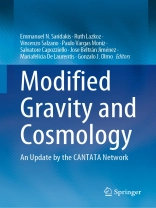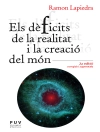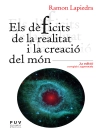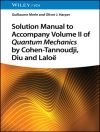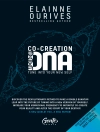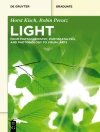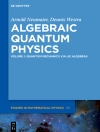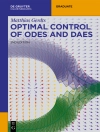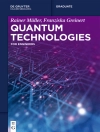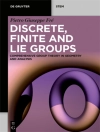With a focus on modified gravity this book presents a review of the recent developments in the fields of gravity and cosmology, presenting the state of the art, high-lighting the open problems, and outlining the directions of future research.
General Relativity and the ΛCDM framework are currently the standard lore and constitute the concordance paradigm of cosmology. Nevertheless, long-standing open theoretical issues, as well as possible new observational ones arising from the explosive development of cosmology in the last two decades, offer the motivation and lead a large amount of research to be devoted in constructing various extensions and modifications.
In this review all extended theories and scenarios are first examined under the light of theoretical consistency, and are then applied in various geometrical backgrounds, such as the cosmological and the spherical symmetric ones. Their predictions at both the background and perturbation levels, and concerningcosmology at early, intermediate and late times, are then confronted with the huge amount of observational data that astrophysics and cosmology has been able to offer in the last two decades. Theories, scenarios and models that successfully and efficiently pass the above steps are classified as viable and are candidates for the description of Nature, allowing readers to get a clear overview of the state of the art and where the field of modified gravity is likely to go.
This work was performed in the framework of the COST European Action “Cosmology and Astrophysics Network for Theoretical Advances and Training Actions” - CANTATA.
Table des matières
Introduction.- General Relativity.- Foundations of gravity – modifications and extensions.- Part I: Theories of Gravity.- Introduction.- A flavour on f(R) theories: theory and observations.- Horndeski/Galileon theories.- Massive Gravity and Bimetric Gravity.- Gravity in extra dimensions.- Non-local models.- Metric-Affine gravity.- Geometric Foundations of Gravity.- Palatini theories of gravity.- Hybrid metric-Palatini gravity and cosmology.- Teleparallel and f(T) Gravity: Foundations and Cosmology.- Finsler gravity .- Gravity’s Rainbow.- Quantum Cosmology in modified theories of gravity.- Part II: Testing Relativistic Effects.- Introduction.- Laboratory Constraints .- Screening mechanisms.- Microscopic effects of modified gravity.- Compact stars as tests of modified gravity.- Compact objects in General Relativity and beyond.- Parametrized post-Newtonian formalism.- Gravitational Waves .- Gravitational lensing.- Classicalizing gravity.- Part III: Cosmology and Observational Discriminators.- Introduction.- Phenomenological tests of gravity on cosmological scales.- Relativistic effects.- Cosmological constraints from the effective field theory of dark energy .- The H0 tensions to discriminate among concurring models.- σ8 tension. Is gravity getting weaker at low z? Observational evidence and theoretical implications.- Testing gravity with standard sirens: challenges and opportunities.- Testing the dark universe with cosmic shear.- Galaxy clusters and modified gravity.- Probing screening modified gravity with non-linear structure formation .- Conclusions.- Outlook.- The end of the beginning.
A propos de l’auteur
Emmanuel N. Saridakis obtained his BSc in Physics from the University of Athens, his MSc from Imperial College/UK, while he obtained his Ph D in Cosmology from the Physics Department of the University of Athens. He has worked as a Postdoctoral Researcher at the Physics Department of the University of Athens, at the Institut de Physique Théorique Saclay/France, at the National Tsing Hua University/Taiwan, and at the Physics Department of the National Technical University of Athens. He has worked as visiting Professor at the Institut d’Astrophysique de Paris/France, at the Pontificia Universidad Catolica Valparaiso/Chile, and as an Assistant Professor 407 at the Physics Department of the National Technical University of Athens. He is an Adjunct Professor at the Physics Department of Baylor University/USA, and Professor at the Astronomy Department of the University of Science and Technology/China. He is Principal Researcher in the National Observatory of Athens. His interests are cosmology, relativity, theories of gravity, dark energy, dark matter, inflation, astrophysical and cosmological implications of modified theories of gravity, observational cosmology, cosmological data analysis.
Ruth Lazkoz got her Phd from the University of the Basque Country with a thesis on exact inhomogeneous solutions of the Einstein field equation in cosmology. She was a postdoc for two years at Queen Mary College (London), and then got back to her alma mater in 2001 where she has been doing research and teaching since. Her current interests are observational constraints on dark energy and modified gravity cosmological models, and in parallel she continues to work on dynamical systems studies of that kind of scenarios. She has been the Chairperson of the COST Action CANTATA CA15117 and an associate editor for General Relativity and Gravitation. She is currently the President of the Spanish Society of Gravitation and Relativity.
Vincenzo Salzano received his Ph.D. in Fundamental and Applied Physics at The University ‘Federico II’ of Naples (Italy), on the topics of observational constraints on extended theories of gravity. He held postdoctoral positions at the Institute of Theoretical Astrophysics, University of Oslo (Norway), at the University of the Basque Country (Spain) and at the University of Szczecin (Poland). He is currently Associate Professor at the Institute of Physics of the University of Szczecin.
Paulo Moniz is a full professor at UBI (Portugal). He graduated from Lisbon and then moved to DAMTP, Cambridge for some years. He has been occasionally returning ever since and is also a life member at Clare Hall (college). He has been at the Editorial Board and then Advisory Board at CQG. The author of several books and several (much) more research papers, supervised students and post-docs, research visitor at many places, several times. Prof. Moniz has been serving at conferences committees, notably the MG series. Server as vice-rector, been a representative at several EU (and affiliated) agencies, too. He received several science prizes. His research interest is on SUSY quantum cosmology (mostly the DAMTP ‘eigen’line).
Salvatore Capozziello is Full Professor of General Relativity and Cosmology at the Department of Physics of University of Naples ‘Federico II’ (Italy) and former President of the Italian Society for General Relativity and Gravitation (SIGRAV). He is the Coordinator of Ph D program in Cosmology and Space Science at the Scuola Superiore Meridionale (Naples). He also teaches General Relativity at Gran Sasso Science Institute for Advanced Studies (L’Aquila) and he is Honorary Professor at Tomsk State Pedagogical University (Russia). He has been supervisor of almost 30 Ph D and 60 Master students in Physics and Mathematics. He spent several periods of his scientific career in USA, Germany, Poland, UK, Russia, South Africa, Canada, Brazil and Japan. His scientific activity is essentially devoted to General Relativity, Cosmology and Relativistic Astrophysics in their theoretical and phenomenological aspects. His main scientific achievements are related to the possibility to explain dark energy and dark matter phenomena by curvature invariants extending General Relativity to more general classes of theories. The results of these researches are published in almost 600 papers appeared in several refereed journals. He is also author of monographic texts on Extended Theories of Gravity, Gravitational Lensing, Cosmology and General Relativity (Eds. Springer, Bibliopolis, Liguori).
Jose Beltrán Jiménez completed his Ph D at the Complutense University of Madrid in 2009 with a thesis entitled ‘Cosmology with vector dark energy”. After that he worked as postdoctoral researcher at University of Geneva (2010 – 2012), Université Catholique de Louvain (2012 – 2015), Université d’Aix-Marseille (2015 – 2017) and Universidad Autónoma de Madrid (2017 – 2018). Since 2018 he holds a tenure track research position at the University of Salamanca. His interests are cosmology and gravity theories with applications to dark energy and the early universe.
Mariafelicia De Laurentis is Professor of astronomy and astrophysics at the University of Naples ‘Federico II’ and associate researcher of the National Institute of Nuclear Physics (INFN) Section of Naples. She was Professor in theoretical physics at Tomsk State Pedagogical University (Russia) and, visiting professor at Institut für Theoretische Physik, Goethe-University, Frankfurt, Germany, wherein 2015 she joined the Black Hole Cam (BHCam) and Event Horizon Telescope project (EHT). She is currently a member of the EHT Science Council and co-coordinator of the Gravitational Physics Input group. She has received numerous awards and recognitions, including some of the most important along with his colleagues, such as the Einstein Medal and the Breakthrough Award in Fundamental Physics for the first image of the black hole. Her scientific activity is essentially devoted to Relativistic Astrophysics, Cosmology and Physics of Gravitational Interaction, in their theoretical and phenomenological aspects, and is the lead or co-author of more than 200 scientific publications.
Gonzalo J. Olmo works as an Associate Professor at the Theoretical Physics Department & IFIC of the University of Valencia – CSIC. Previously he did postdoctoral stays at the University of Wisconsin-Milwaukee (USA), Perimeter Institute for Theoretical Physics (Canada), and Instituto de Estructura de la Materia – CSIC (Madrid, Spain). Currently he also has close ties as visiting professor with the Federal University of Paraiba (João Pessoa, Brazil) and the Federal University of Pará (Belém, Brazil). His research is focused on theoretical aspects of gravitational physics, from quantum particle production in curved space-times to extensions of General Relativity with applications to quantum gravity phenomenology, including the study of nonsingular cosmologies, black holes, wormholes, and other compact objects. He also has an interest in models of stellar structure and observational features of compact objects (shadows), symmetry breaking in gravity, and methods to obtain exact solutions. Most of his works on modified gravity are framed within the metric-affine (or Palatini) approach.
